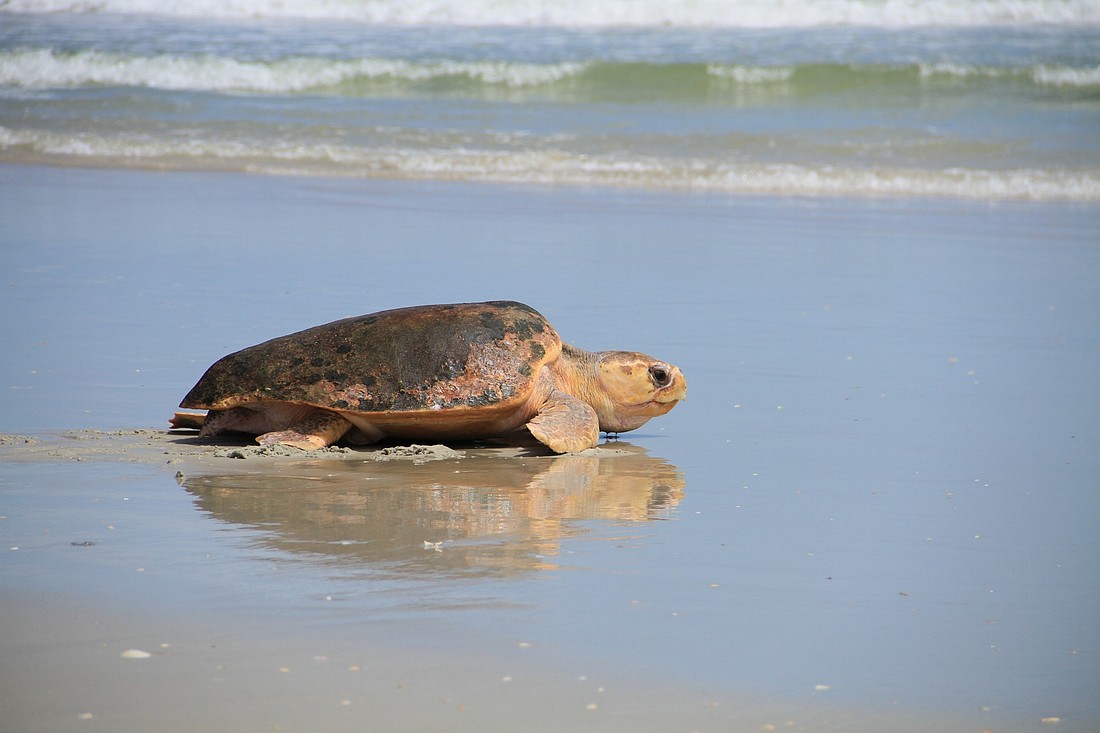- May 2, 2024
-
-
Loading

Loading

Anyone who has been to the beach this month may have noticed some areas marked off with pink ribbon, which means sea turtle nesting season in Florida has begun.
The pink indicates it's nesting season in May, and with each consecutive month, until the season ends at the end of October, the colors will change. And as the ribbon color changes, it means the time is getting closer to hatchlings making their way across the sand and into the ocean.
An index nesting beach survey that was started in 1989 by the Florida Fish and Wildlife Conservation Commission found that loggerhead nests on the state's 27 core index beaches reached a minimum of 28,876 nests in 2007 and a maximum of 65,807 in 2016. According to the index, green turtle nest counts greatly differed from loggerhead numbers as they increased eightyfold on the 27 core beaches since the survey began.
When it came to leatherback nests, which are more rare than the other two species, 2017 had the lowest count with 205 reported nests on the core beaches.
FWC spokesperson Michelle Kerr said that within the last three years there has been a record number of green sea turtles documented throughout the state. She said loggerhead numbers have also increased and that the east coast of Florida holds about 98% of this species' nesting.
"We're hoping that the high numbers in Florida continue," Kerr said. "We have almost 3,000 volunteers across the sate that assist our agencies each year by monitoring nesting beaches."
Currently, the nesting season is still getting started, but that doesn't mean everything is quiet on the Volusia beaches. According to Jennifer Winters, Volusia County sea turtle habitat conservation plan manager, there are around 20 nests. Only two leatherback nests have been recorded so far.
"The nesting patterns have been pretty consistent," Winters said. "Of course our mission is for people and turtles to coexist."
The FWC reported that in Florida, turtles have not been able to make nests in natural dunes due to the construction of reinforcements meant to protect buildings from erosion.
Winters said while development along the Volusia coast has not seemed to affect sea turtle nesting numbers, the weather can cause problems, especially when it comes to females finding a place to lay their eggs.
Winters said erosion of the beaches due to past storms, especially last year's hurricanes, could pose problems for turtles looking for a safe place for a nest. She said in New Smyrna Beach there are areas that are solely intertidal for extended periods, which minimizes habitat in that area.
"Our beaches are narrower in places than they were last year," Winters said. "There's not as much upper dry beach in areas throughout the county, and some places are worse than others."
Even though many of the sea turtle eggs have not yet been laid, and those that have been laid will take 60 days to incubate before hatching, there have already been turtles that need rescuing.
Melissa Rally, manager of the sea turtle rehab department for the Marine Science Center, said four hawksbill sea turtles of post-hatching size — usually between five and ten centimeters — have been rescued this season. The turtles were rescued between February and Tuesday, May 8.
Rally said the amount of sea turtles they take in varies from year to year, usually dependent on the weather. She said one season there were more than 6,000 washbacks, turtles that have been pushed back to land, that were found. Last year there were more than 1,500 washbacks and hatchlings found the day after Hurricane Irma passed through.
"It just really depends on weather," Rally said. "We are hoping for a quiet storm season."